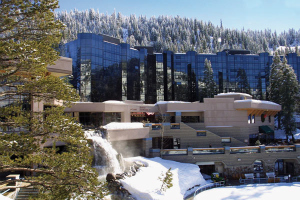Mt. Rose Ski Tahoe offers convenience, solid terrain

Mt. Rose Ski Tahoe overlooking Reno, Nev., may be the most conveniently located ski area in the country. At just 22 miles from Reno-Tahoe International Airport, Mt. Rose is closer to a major airport than any other U.S. ski area of more than 200 skiable acres. Mt. Rose Ski Tahoe may be seen in the distance above downtown Reno, Nev. Photo: Mt. Rose Ski Tahoe While local Reno skiers account for many of the resort’s visits, destination travelers can get in some bonus skiing on a travel day in or out of Reno. The ski area’s name is a misnomer, because the ski runs are on Slide Mountain across the highway from the actual Mt. Rose. The eastern side of Slide Mountain was once Reno Ski Bowl, then renamed Slide Mountain Ski Area. Slide Mountain’s north-facing slopes were the separate Mt. Rose Ski Area until the two merged in 1987. Between the two formerly distinct ski areas, 200 acres of north-fac...




